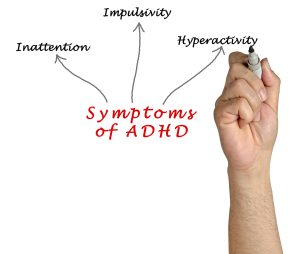 Driving is an activity which requires sustained attention. Drivers must focus on driving and divide their attention among multiple parts of the driving activity: steering, acceleration, braking, watching the speedometer, watching the road, and reacting to a constantly changing environment. For DUI investigations (called ‘OVI’ in Ohio), law enforcement officers are taught to look for problems with attention and administer divided attention sobriety tests. What happens when the subject of an OVI investigation is a driver with ADHD?
Driving is an activity which requires sustained attention. Drivers must focus on driving and divide their attention among multiple parts of the driving activity: steering, acceleration, braking, watching the speedometer, watching the road, and reacting to a constantly changing environment. For DUI investigations (called ‘OVI’ in Ohio), law enforcement officers are taught to look for problems with attention and administer divided attention sobriety tests. What happens when the subject of an OVI investigation is a driver with ADHD?
What is ADHD?
According to the United States National Institute of Mental Health “Attention-deficit/hyperactivity disorder (ADHD) is a developmental disorder marked by persistent symptoms of inattention, hyperactivity, and impulsivity.” There are three types of attention: sustained, selective, and divided. Sustained attention allows a person to stay on task for a long period of time. Selective attention prevents a person from being easily distracted. Divided attention allows a person to do more than one thing at a time. People with ADHD are easily distracted, have difficulty staying on task, and have difficulty with divided attention tasks.
What are the Symptoms of ADHD?
People with ADHD may experience an ongoing pattern of inattention, hyperactivity, and impulsivity.
Signs of inattention can include difficulty with:
- Listening when spoken to
- Paying attention to details
- Following instructions
- Concentrating on tasks and finishing tasks
- Getting easily distracted
Signs of hyperactivity and impulsivity can include:
- Moving around at times when it is not appropriate
- Struggling to wait or be patient
- Talking excessively
- Answering questions before they are fully asked and interrupting others
ADHD May Present as Alcohol/Drug Impairment
During a traffic stop and OVI investigation, an officer may mistake symptoms of ADHD for signs of alcohol/drug impairment. A driver with ADHD may have difficulty listening to the officer, paying attention to details, and following instructions. The driver might not concentrate on tasks, such as providing their driver’s license, proof of insurance and registration. The driver may also get easily distracted while interacting with the officer, talk excessively, answer questions before they are fully asked, and interrupt the officer. The officer may attribute these behaviors to intoxication when they are really due to the driver’s ADHD.
ADHD Can Affect Field Sobriety Tests
There are three standardized field sobriety tests (SFSTs). Two of those tests, the Walk and Turn and the One Leg Stand, require a person to uses all three types of attention: sustained, selective, and divided.
The symptoms of ADHD impact a person’s ability to perform the tests in multiple ways. First, the test instructions are long, so someone who struggles to listen and be patient may not comprehend the instructions. Second, the test instructions are full of details, such as touching heel-to-toe, keeping their arms at their sides, counting aloud, turning with a short series of steps, taking the correct number of steps, keeping both legs straight, holding up the foot at the designated height, and keeping the foot parallel. A person who has difficulty paying attention to details may not understand everything they are supposed to do.
Third, the tests require following instructions, and someone with ADHD has problems following instructions. Fourth, a person who cannot concentrate on the test or gets easily distracted will be unable to perform the test well. Fifth, the tests require sustained attention and divided attention, and someone with ADHD has problems with both. Finally, the tests require the subject to remain in position, and a person with ADHD is prone to move around at time when it is not appropriate.
ADHD and OVI Defense
A person with ADHD who is charged with OVI should make their lawyer aware of their ADHD. The lawyer should consider that condition when forming a defense to the OVI charge.
 Columbus OVI/DUI Attorney Blog
Columbus OVI/DUI Attorney Blog

